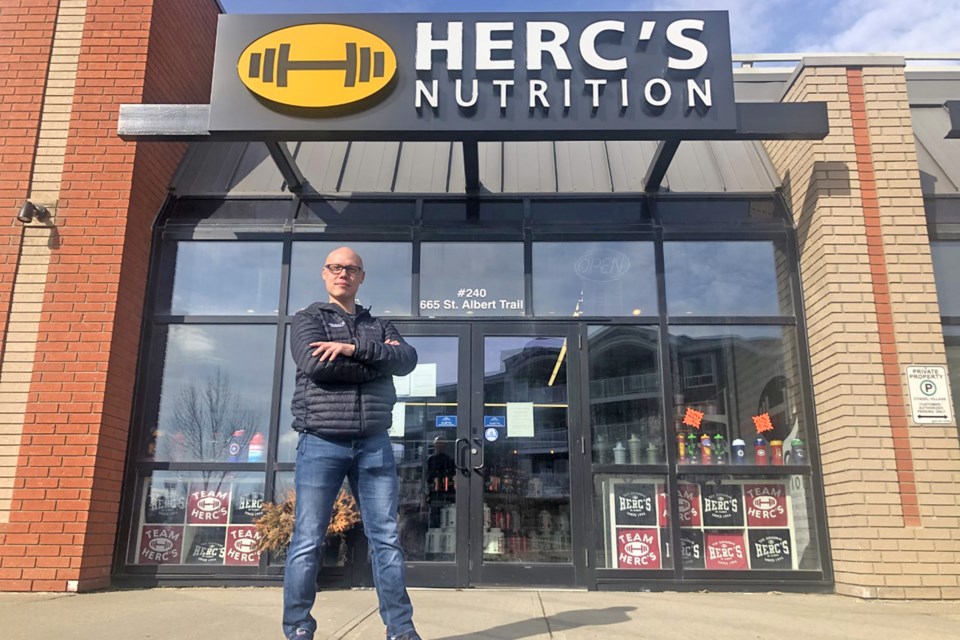Small businesses in St. Albert barred from or not receiving enough support from the federal government can now access financial aid through western Canada's regional development agency.
Last month, the federal government earmarked $962 million in funds for the Regional Relief and Recovery Fund (RRRF), a new program aimed to help more businesses and organizations, including those in the tourism sector and seasonal industries, to keep their employees, pay rent and pay their bills.
On Wednesday, Prime Minister Justin Trudeau provided more information on the program. Applications for the RRRF opened later in the afternoon.
The Western Economic Diversification Canada (WD) is one of six groups that will split the funding. It will receive $304.2 million. WD will also work with key partners, like the Community Futures Network of Canada‘s offices to help western Canadian businesses in rural and remote regions.
"Here's the bottom line: these organizations understand the economic realities and specific challenges facing both your region and your business," Trudeau said. "If you're struggling but did not qualify for other programs, like the wage subsidy or the emergency business account, give them a call. They're there for you."
Unlike other support programs, a company that has not had any sales to date, businesses without salaried employees, and those that pay owners through dividends, now qualify for the RRRF.
When David Niebach, owner of Herc's Nutrition in St. Albert, first heard the announcement about the RRRF, he said he was excited at the prospect of finally being able to take hold of a financial lifeline when all other supports had fallen through.
Once the application opened, he logged on to WD's webpage and submitted it for review.
"I was so happy," Niebach said. "I think that's covering the gap now, as long as we get approved for funds."
He said the process overall was "straightforward" - the application required the date of incorporation, contact information, number of employees, payroll numbers and forecasted revenues for the next six months.
"There's not a lot of work that needs to be done, I've looked at the Canadian wage subsidy and there's definitely more involvement with that program," he said.
Once those amounts are plugged in, the website gives a calculation to show whether the business would be in a negative or positive cash position, which could be used as an indication of how much money is needed.
Funds will be distributed through applications for either a loan of up to $40,000, or a loan of more than $40,000.
To qualify, businesses must prove they have fewer than 500 full-time employees, have suffered financially because of the COVID-19 pandemic, and were operational as of March 1. Sole proprietors and not-for-profit organizations are not eligible.
To get anything more than $40,000, business owners must also prove they made less than $10 million last year, along with other requirements.
The email Niebach received back said he would receive a funding decision by email "as quickly as possible", but with anticipated high volume submissions, a response may not be given in "timely fashion."
It's now a waiting game for Herc's Nutrition to see when the money will be rolled out, and next month's rent is coming up fast.
Herc's landlord RioCan said they would tack already deferred monthly rent payments onto future months, and Niebach said he is expecting the amount due for June's rent to grow by 20 per cent if his landlord does not agree to defer it further.
"That loan would pretty much cover us for rent for 12 months. If the rent is covered, based on the sales we still have, we can still pay our one employee," he said.
"If our rent starts back up June 1, we need that money. If we don't have it, it's going to be tough."
Eldyka Simpson, owner of Ripple Effect Wellness Centre, said she was surprised to hear the federal government had rolled out another program for small businesses.
"I was not expecting it," she said. "I'm grateful that they've listened to the people who have not been able to access anything so far."
If approved, the loan would be used toward expenses to ensure she can open her doors once restrictions are lifted. A portion of the RRRF is forgiveable and could be used towards fixed costs, a similar structure to the CEBA.
Allocating the money quickly could help Simpson avoid having to go into further debt with June's rent looming over her. However, while it could provide a quick-fix solution now, she said she is concerned about being able to pay back the loan in the future.
Under the RRRF, eligible businesses must repay 75 per cent of the contribution amount before Dec. 31, 2022.
If the contribution isn't repaid, the balance owing will be converted to an additional three-year term repayable contribution, beginning January 2023, with no forgivable portion. The full balance, of the contribution amount must be repaid no later than December 31, 2025.
"I pick a word of the month every month on how I'm going to focus on my business. For May, my quality is surrender," Simpson said.
"It's really hard to keep fighting emotionally and energetically, to be 100 per cent 'on' all the time. So I'll apply for this loan, surrender, and trust that everything will turn out."


.jpg;w=120;h=80;mode=crop)

